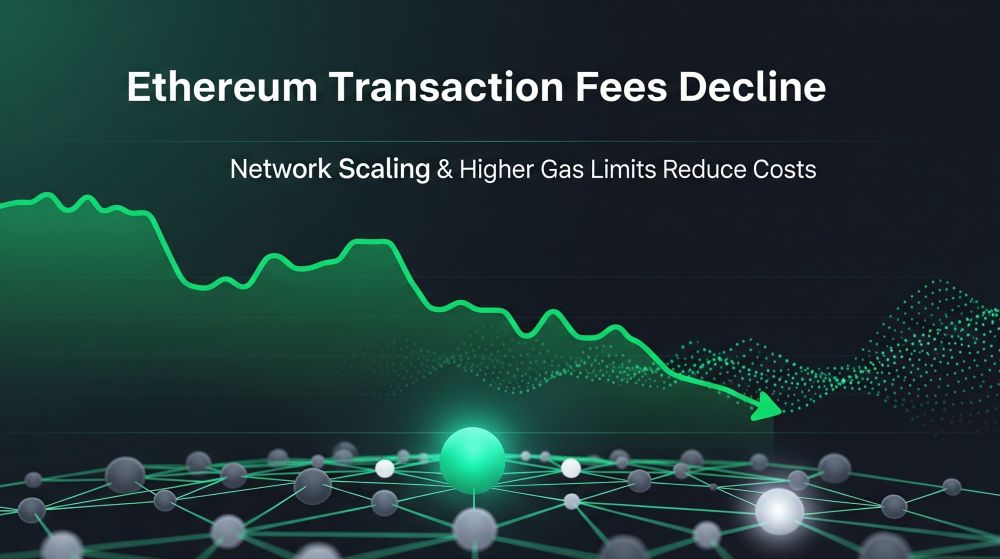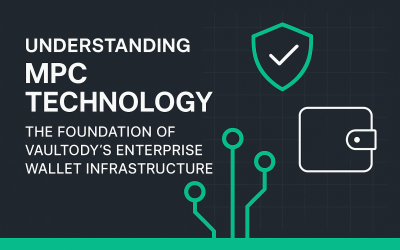Ethereum is undergoing one of its most significant network upgrades in recent times. With the recent increase of the block gas limit to over 37 million - and nearly half of validators supporting a new 45 million target - the Layer-1 blockchain is processing transactions faster, with lower costs and greater scalability. These upgrades arrive at a time when user activity, enterprise interest, and the price of ETH are all climbing in tandem.
Let’s break down why Ethereum’s scaling journey matters, what it means for on-chain costs, and how service providers like Vaultody are amplifying these benefits for enterprise-grade adoption.
The Gas Limit Explained: Why It’s Central to Ethereum’s Performance
Ethereum’s gas limit controls how much computation can be packed into each block. A higher gas limit means more transactions can be processed at once - boosting throughput and lowering congestion-related fees.
As of July 21, 2025, Ethereum’s gas limit has reached 37.3 million, and over 47% of staked validators are pushing for the next milestone: 45 million. This movement is backed by the community-driven “Pump the Gas” campaign, which started in early 2024 to drive scalability on Layer-1.
Transaction Speeds and Cost Efficiency Hit New Highs
Ethereum Reaches 18 TPS and Climbing
The impact is already visible: Ethereum now processes nearly 18 transactions per second (TPS) - a notable jump from the 15 TPS range seen earlier this year. The network’s efficiency is clearly improving, and that translates to faster confirmation times for users and developers alike.
Gas Fees Drop as Congestion Eases
As more space opens in each block, users pay less to get their transactions through. This means lower Layer-1 transaction costs for everything from token transfers to NFT mints and complex smart contract interactions. For many, this represents a new era of affordability on Ethereum.
Rising Demand: Activity and Price Reflect Network Strength
Daily Transactions Surge to 1.4 Million
Ethereum’s scaling upgrade comes at a time of growing user engagement. Daily transactions have grown from 1.1 million in April to 1.4 million in July, indicating stronger demand across DeFi, NFTs, on-chain identity, and more.
ETH Price Gains Mirror Network Use
This uptick in on-chain volume has paralleled a price surge. Over the past month, ETH has rallied over 54%, peaking above $3,800 - its highest point in 7 months. Institutional investment, including ETF flows and corporate wallet accumulation, is playing a major role in this rise.
Infrastructure Upgrades Make Scaling Sustainable
Geth v1.16.0 Brings Major Efficiency Gains
Behind the scenes, Ethereum developers have rolled out Geth v1.16.0, a major upgrade that dramatically reduces the size of archive nodes using path-based storage mode. Storage demands drop from over 20 TB to just 1.9 TB, allowing more validators and developers to stay synced without excessive hardware.
Validator Consensus Powers Change
Validators can raise the gas limit by just 0.1% per block, meaning widespread consensus is needed for lasting changes. Currently, nearly 50% of staked ETH supports this increase - putting Ethereum on a clear path toward the 45M target in the coming weeks.
Balancing Scale with Decentralization
While bigger blocks bring benefits, they also increase hardware demands. Some worry that smaller node operators could be priced out, leading to increased centralization. Ethereum’s devs are aware of these risks and are rolling out optimizations like Geth’s archive mode to keep the network accessible and trustless.
How Vaultody Amplifies Ethereum’s Scaling Benefits
As Ethereum scales, platforms like Vaultody are helping users, enterprises, and institutions tap into its full potential. Vaultody supports Ethereum and all ERC-20 tokens, making it easy for users to manage assets and deploy smart contract operations securely.
For enterprise clients, banks, and crypto-native businesses, Vaultody’s Smart Vaults and Automation Vaults dramatically reduce operational costs. Through our Gas Tanker, Vaultody enables up to 90% gas savings on batch Ethereum transactions - unlocking deeper efficiency beyond what Ethereum’s network-level upgrades already provide.
Whether you’re handling tokenized assets, automating DeFi strategies, or just sending mass payments, Vaultody ensures your Ethereum transactions are both cheaper and smarter.
What Comes Next: Ethereum’s Road Ahead
Aiming for the 45 Million Milestone
With validator support trending upward and recent network improvements proving stable, it’s likely Ethereum will hit its 45 million gas limit goal soon. This would be another big leap in transaction throughput, reducing costs even further.
Fusaka Hard Fork on the Horizon
Looking ahead, Ethereum is set to roll out its Fusaka hard fork in November 2025, which is expected to introduce further performance optimizations, particularly around block efficiency and gas strategy. This roadmap positions Ethereum not just to scale, but to lead.
Conclusion: Ethereum Is Scaling Responsibly - And Vaultody Helps You Scale With It
Ethereum is proving that it can scale without sacrificing security or decentralization. With faster transactions, lower gas fees, and broader validator support, it’s more capable than ever of handling global demand for decentralized services.
At the same time, solutions like Vaultody provide the tooling needed to harness these benefits at scale - especially for businesses and institutions. Whether you’re an investor, developer, or enterprise operator, now is the time to explore how Ethereum and Vaultody together can power your next wave of growth.









 Copy link
Copy link